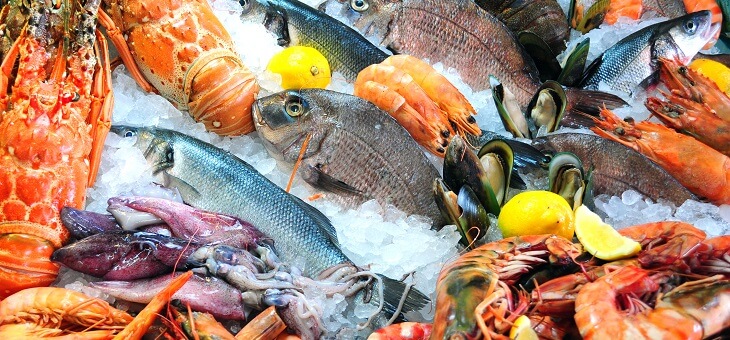Food can be a massively dividing subject, but I think we can all agree that the best fish is the freshest fish.
We all have tales of woe relating to food poisoning from fish or shellfish, with oysters gone rogue or less than ideal prep from dodgy seaside restaurants while on holiday. I don’t know why we do this. I have often eaten at places while on holiday that I would cross the street to avoid while at home, and I’m not alone judging by tales of woe from friends and acquaintances.
So, how can you tell if your fish is the freshest fish?
Check the labelling. Some fish has been frozen, but this isn’t necessarily a bad thing. Fish snap frozen just minutes after being caught is often safer than fish that has taken days to pass through a supply chain chilled.
Read: Creamy fish pie for one
But if fresh unfrozen fish is your thing, undeniably your first clue is smell.
Bad fish cannot hide. That smell passes through walls. I had to pass a fish shop of questionable hygiene almost every day at one of my places of residence and that smell chased you down the street. Needless to say, we were enthusiastic red meat lovers around that time.
So, if you’ve managed to get past the fishmonger’s front door without gagging, what’s next?
You give that fish a good look in the eye. If it’s a whole fish, the eyes should be clear, plump and bright, not sunken or cloudy. Although some fish can have naturally cloudy eyes including mackerel, barramundi, and kingfish.
If the fishmonger allows you to handle the fish, give it a bit of a poke. Whole fresh fish will ‘bounce’ back like your own flesh when touched.
Read: Research finds fish oil can fight superbugs
For fillets or whole fish with scales on, check if there are a lot of missing or damaged scales, which can indicate it’s already had a tough life or hasn’t been kept at the correct temperature.
Once again, for a whole fish, check the gills. Poking your finger into fish gills is no-one’s idea of fun, but it’s often the best indicator of freshness. Fresh fish gills are dark red and will lose their colour over time. They should also feel clean and cold, not slimy.
Another good way to reassure yourself about the quality of your fish is to get to know your fishmonger.
My fishmonger is not cheap, but he knows everything about every cut of fish in his shop. He can fillet a whole fish in seconds and can advise on what fish is best for what dish. You want a fish for a quick curry in coconut sauce rather than satay? Ari – because, of course, he’s Greek – can tell you. Need sashimi grade tuna? Even though he has tuna in store, he won’t sell it to you unless it’s the grade you need and will grab some next time he’s at the market and phone you when it’s in.
Read: Fresh and healthy spicy fish skewers
He has customers from a 300-kilometre radius and it’s standing room only before Christmas and Easter. And while sometimes the prices make me whimper in pain, I don’t want discount fish that needs to be sold quickly.
And don’t be your own worst enemy. If your travel time home is any more than a few minutes, make sure you pack your purchase in ice.
At the end of the day, if you are concerned about food poisoning from fish, the safest bet is a bit like avoiding pregnancy and practising abstinence. Those species prone to carrying ciguatera poisoning – one of the more common causes of fish poisoning – are amberjack, groper, snapper, sturgeon, king mackerel, barracuda and moray eel. Does anyone eat that last one? You deserve food poisoning if you do.
If you enjoy our content, don’t keep it to yourself. Share our free eNews with your friends and encourage them to sign up.

